Newest King Schools Course Will Help Lower Insurance Costs
 Martha and John King have built a legend,
preparing aviators for the written ("knowledge") tests, and their
success is well-documented. They were approached by AVEMCO
Insurance last year, to try something different: structuring a
course that would teach, not how to pass a test with known
questions and known answers, but a test of less-defined
dimensions, and ultimately much-higher impact.
Martha and John King have built a legend,
preparing aviators for the written ("knowledge") tests, and their
success is well-documented. They were approached by AVEMCO
Insurance last year, to try something different: structuring a
course that would teach, not how to pass a test with known
questions and known answers, but a test of less-defined
dimensions, and ultimately much-higher impact.
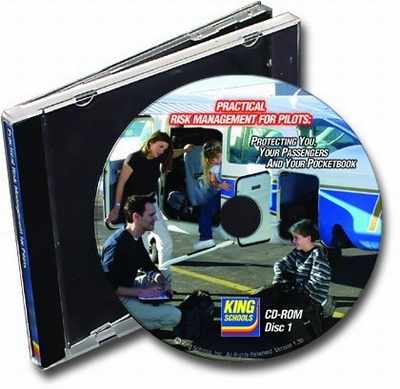
ANN sat with the Kings and with Jim Lauerman,
AVEMCO's Chief Underwriting Officer, and we learned how this
breakthrough came about, and what the Kings learned, building this
very different product.
Regardless of what we've been told, and what we tell our
passengers, flying isn't 'safe.' The myth that, "The
most-dangerous part of your flight is the trip to the airport" is
false, as far as GA flying statistics are concerned. If there is
any good news, it is that the vast majority of GA accidents fall
into just a few areas, and pilot awareness of those areas, both
before and during flight, can drastically reduce accidents, save
lives, reduce aircraft damage... and save your insurance money.
[See details on AVEMCO's real-money incentive tie-in, below
--ed.]
 John
King started things off: "If you want to be 'safe,' stay in bed."
Martha added, "In any powered vehicle, you have more risk -- you're
dealing, after all, with a powered vehicle."
John
King started things off: "If you want to be 'safe,' stay in bed."
Martha added, "In any powered vehicle, you have more risk -- you're
dealing, after all, with a powered vehicle."
The myth has deep roots, and they started with an effort to calm
the flying (paying-passenger) public. John said, "From the days of
the barnstormers, we've been saying, 'It's perfectly safe.' The
numbers say otherwise. The idea is, if you refuse to admit
risks, you won't manage them." If you're like most
pilots, it's even worse: "The way we [in GA] have been practicing
'risk management' is flawed. "Pilots may scare themselves and think
they've learned something; but in fact, maybe they've just been
lucky." They learn by trial and error: "If they get scared, they
may say, 'I'm not going to do THAT again.' Through such
experiences, you get a longer list of things you won't do while
flying."
Learning by doing is haphazard, dangerous, and expensive.
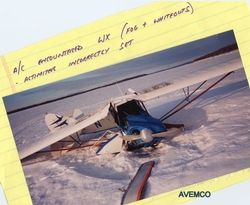 Mr.
King doesn't think 'experience' should be the only way to learn
risk management. "Experience gives you the test first," he
said, implying that it might be beneficial to have studied first.
"Experience keeps adding to your personal 'list.' CFIs have longer
lists, built from their own, and their students' experiences."
Here's a likely way a pilot of today learns risk management:
Mr.
King doesn't think 'experience' should be the only way to learn
risk management. "Experience gives you the test first," he
said, implying that it might be beneficial to have studied first.
"Experience keeps adding to your personal 'list.' CFIs have longer
lists, built from their own, and their students' experiences."
Here's a likely way a pilot of today learns risk management:
- You do something in the air, or something happens that you
should have avoided, and you get scared. You add that to your
'personal list of things not to do again.'
- Your CFI relates his personalized sayings. You add the wisdom
to your list of things you won't do.
- You think about flying, and make up more rules -- more things
you'll never do.
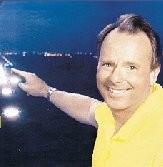 "The problem
with this," John summed up, "is that doesn't help you anticipate
situations in which you don't have a 'rule.' We [aviation educators
of all types] need a system, a procedure for identifying
and assessing and managing risks. That's what this is all
about: a systematic way of identifying, assessing, and managing
risks." It's not easy, either. "Risks are sneaky and
insidious."
"The problem
with this," John summed up, "is that doesn't help you anticipate
situations in which you don't have a 'rule.' We [aviation educators
of all types] need a system, a procedure for identifying
and assessing and managing risks. That's what this is all
about: a systematic way of identifying, assessing, and managing
risks." It's not easy, either. "Risks are sneaky and
insidious."
Martha took over. "We got a lot of stories from doing our
weekend ground schools. We got to know specialized stories; but a
lot of people who [could have told the best stories] made mistakes,
and couldn't be there -- they were dead." No story is 'typical,'
but this one is illustrative: "John had a student, disruptive,
didn't follow the rules of the class... John asked the FAA
inspector [who was administering the tests at the end of the class]
to 'talk to him.' He didn't; John didn't... Not long afterward, he
got into the clouds, and managed to get to the first airport
on his trip; but he just 'had to go' on; he killed himself on the
return trip."
Kings Go to School
The Kings don't just make this stuff up -- they do real,
academic research. This course, they could see, would cover new
ground. "We went to an aviation psychology symposium at Ohio
State," John said. "They had knowledge we hadn't seen before. I
realized that perhaps our [macho, independent] culture works
against [learning] risk management. We have to change our culture.
The symposium called for a change in that culture and presented a
systematic approach to risk management -- it struck a chord."
A couple years ago, in an exclusive ANN
interview, John and Martha talked about their growing
awareness of the hazards of being 'in denial' about the risks
inherent in GA flying. The seeds had been planted...
AVEMCO Makes it Happen.
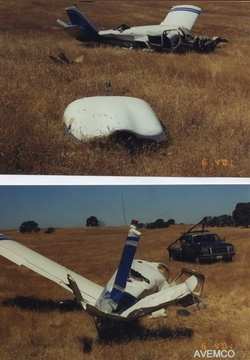 "Then Jim Lauerman [AVEMCO Chief Underwriting
Officer] called us, and said we could make a difference. They
put the new course into the Safety Rewards Program."
"Then Jim Lauerman [AVEMCO Chief Underwriting
Officer] called us, and said we could make a difference. They
put the new course into the Safety Rewards Program."
Mr. Lauerman himself was at the table, and noted, "The majority
of losses are from people who just don't see what they're
getting into."
Martha explained, "With risk management -- the benefit is real,
but the risk is indefinite -- it's hard to get the idea..."
John added a revealing truth: "Experts make as many mistakes as
novices, but they fix them sooner."
Martha pointed out, "Their experience lets them correct
mistakes, before they become problems."
It's not that way, where the aircraft itself is concerned.
John noted, "We take the airplane in for annual, thinking it's a
'perfect' airplane. The A&P conducts surveillance, identifies
problems, and corrects them. We just don't have a culture for
pilots, like we do for the airframes. Almost all accidents are
caused by a failure in risk management, yet our training focuses
almost exclusively on flying skills."
Martha noted, "The skills have to be there; you simply have to
know how to land in a crosswind." Skills, though, won't have to
stretched to the limits, if the pilot thinks ahead, and manages
risks...
The 'Big Lie'
John explained aviation's 'big lie:' "The reality is," he said,
"you're about seven times likelier to get killed in a GA accident
than in a car -- that's close to the motorcycle [fatality] rate.
First, we need to admit the risks."
 "Flying is all about change," he continued. "All
those things get planned, but they depend on variables. As the
flight progresses, the pilot gets fatigued, he may get complacent;
the aircraft gets lower on fuel. The longer you fly [on any given
flight], the smaller becomes your 'circle of alternatives' --
you have fewer alternate landing sites; you're more tired; the
weather changes. Plus, you have increasing 'external pressures.'
That's important, for us goal-oriented pilots."
"Flying is all about change," he continued. "All
those things get planned, but they depend on variables. As the
flight progresses, the pilot gets fatigued, he may get complacent;
the aircraft gets lower on fuel. The longer you fly [on any given
flight], the smaller becomes your 'circle of alternatives' --
you have fewer alternate landing sites; you're more tired; the
weather changes. Plus, you have increasing 'external pressures.'
That's important, for us goal-oriented pilots."
Martha and 'Lindy III'
Mrs. King picked up: "Those external pressures increase
enormously -- think of how many pilots have run out of fuel, 30
miles from the destination, on a 600-mile trip." She used some
insight from Eric Lindbergh's trip to Paris last year: "On the
Lindbergh flight planning, we were looking at the
fuel/weight/forecast icing vs climb rate, and we discussed leaving
some fuel behind, to increase climb [through the icing altitudes].
I said to Eric, 'Once you cross the coast of France, there is NO
WAY you won't try for Paris." Eric agreed, realizing the
tremendous, building pressure to make the goal. "He took the fuel,"
Martha noted.
CARE for Yourself
This being a King course, you knew it wouldn't be long before we
ran into a mnemonic -- an orderly way to remember disparate, but
related topics. The one we'll cover is C.A.R.E., which stands
for
- Consequences [How bad is the situation, and how bad could it
get?]
- Alternatives ["You always need them, but as the flight
progresses, you have to work harder to make sure you still have
some."]
- Reality ["When something changes, recognize it; don't deny it.
Deal with things as they are -- not as they are, on your
plan."]
- External pressures ["As you approach your destination, your
incentives to get there go up."]
 You'll
need the course to get all the benefit, but consider: we need to
consider the consequences of sticking to our original plan, as
alternatives fall behind us and reality (weather, fuel, maybe the
oil pressure) changes; and we need to be aware that our own
decision-making process actually changes, the closer we get to our
goal, because of those external pressures. ("What? You landed
thirty miles from here? Now we've got to come get you -- you're
making us drive in this bloody, blinding blizzard? You
bum!")
You'll
need the course to get all the benefit, but consider: we need to
consider the consequences of sticking to our original plan, as
alternatives fall behind us and reality (weather, fuel, maybe the
oil pressure) changes; and we need to be aware that our own
decision-making process actually changes, the closer we get to our
goal, because of those external pressures. ("What? You landed
thirty miles from here? Now we've got to come get you -- you're
making us drive in this bloody, blinding blizzard? You
bum!")
AVEMCO's Commitment: Money Talks. Real Money.
Martha explained that all this talk is important, but the
industry "...needed a 'driver.' Pilots will go out and learn on
their own, but AVEMCO came up with a great 'driver.'"
AVEMCO's Jim Lauerman added, "Pilots don't mind researching and
learning, if they're going to buy another gadget, or something...
but this is different." AVEMCO is offering actual credits to pilots
for this course. Not only is AVEMCO allowing a 5% premium
credit for completion; there's another program, for those
who have completed the King course, which allows another
5% for certain additional training, after the
prerequisites are met.
John King put it in perspective: "AVEMCO's commitment to
this is huge -- their commitment to lowering accident rates is
enormous... Some insurance companies give discounts for what are
really non-related items; AVEMCO put its money where its mouth
is."
Ken Kaplan, King's marketing maven, who keeps track of
everything, noted, "I expected a reaction from new pilots; but
experienced pilots -- airline, Air Force pilots -- tell us,
'thank you,' and how personally applicable the course is."
So, who writes the 'right' and 'wrong' answers?
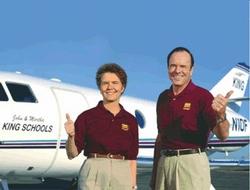 This course
isn't about learning the FAA's 'right' answers; it's about weighing
inputs against experience, looking at the situation and the
alternatives, and picking the 'best' from what may be several
'plausible' actions. Martha gave an insight into one of the
course's most-difficult hurdles (particularly appreciated by all
the educators in the audience): "It's not easy to write scenarios
that are ambiguous enough..."
This course
isn't about learning the FAA's 'right' answers; it's about weighing
inputs against experience, looking at the situation and the
alternatives, and picking the 'best' from what may be several
'plausible' actions. Martha gave an insight into one of the
course's most-difficult hurdles (particularly appreciated by all
the educators in the audience): "It's not easy to write scenarios
that are ambiguous enough..."
It's not just about us aviators, either.
Martha brought up another point, a point which meets with
'denial' in a lot of pilots: the general, non-aviating public has a
different perspective on us, since September 11. "We need to be
acceptable to the general public, particularly these days -- an
accident is all some of them need to get on their high horse."
Tips
The Kings' experience and exposure to so many of us clearly
helped put this course together, and they offered a complehensive
tip: think; don't guess.
Think about how, as an instructor, you can introduce some of the
non-standard into your students' routine. For instance, on a
student cross-country, have the student show he can follow his
plan; then change the destination, and make him think about
how to plot the alternatives. [As soon as he gets his head into the
chart, you can pull the throttle, too; that's always good for a
learning experience --ed.]
Although the course is brand new, the Kings are happy with an
early testimonial: "You've made this sharply focused; not fuzzy."
That kind of message nevertheless must give the Kings those 'warm
fuzzies...'
 ANN's Daily Aero-Term (12.19.25): Ultrahigh Frequency (UHF)
ANN's Daily Aero-Term (12.19.25): Ultrahigh Frequency (UHF) NTSB Prelim: Cirrus Design Corp SR22T
NTSB Prelim: Cirrus Design Corp SR22T Classic Aero-TV: The Red Tail Project--Carrying the Torch of the Tuskegee Airmen
Classic Aero-TV: The Red Tail Project--Carrying the Torch of the Tuskegee Airmen Aero-News: Quote of the Day (12.19.25)
Aero-News: Quote of the Day (12.19.25) Airborne 12.17.25: Skydiver Hooks Tail, Cooper Rotax Mount, NTSB v NDAA
Airborne 12.17.25: Skydiver Hooks Tail, Cooper Rotax Mount, NTSB v NDAA











